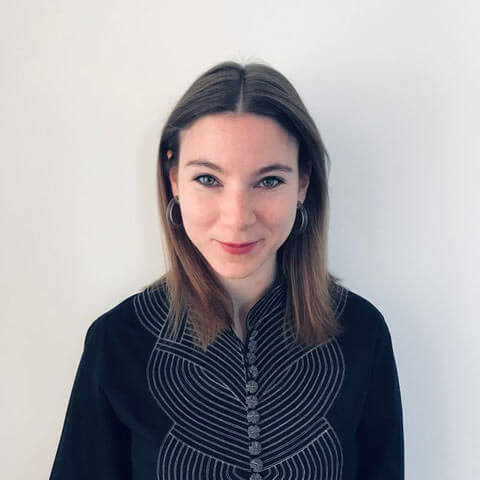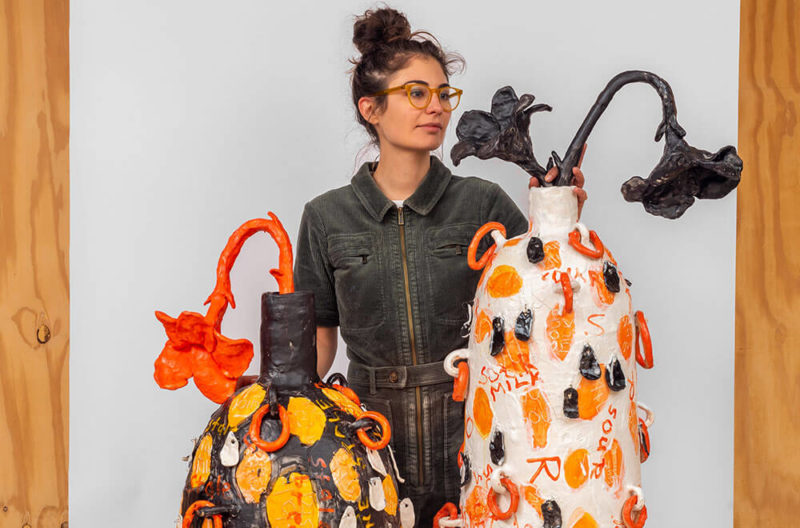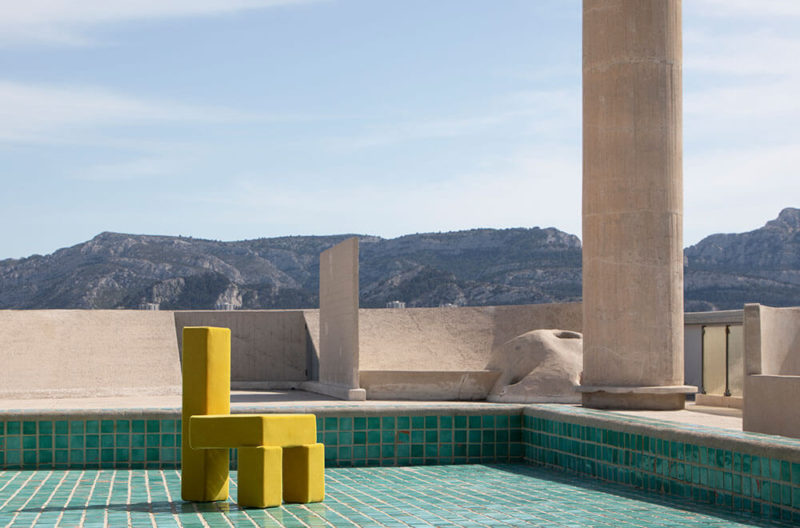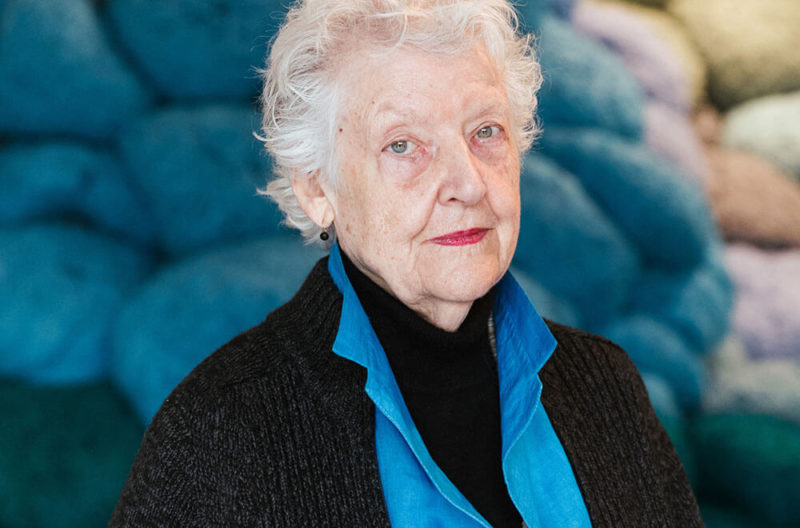Venice Biennale 2022 / Roundup
Max Ingrand, Isamu Noguchi, Grégoire Scalare – Astrid Malingreau reports on the wealth of design on offer.

Installation view, Palazzo Querini Stampalia
COURTESY: © White Cube / PHOTOGRAPH: Ollie Hammick
BETWEEN EAST AND West, water and land, religion and carnival, elite art and mass tourism, the city of Venice escapes any categorisation. It is in this indefinable but mesmerising setting that the art crowds gathered a few weeks ago for the opening of the 59th edition of the Art Biennale.
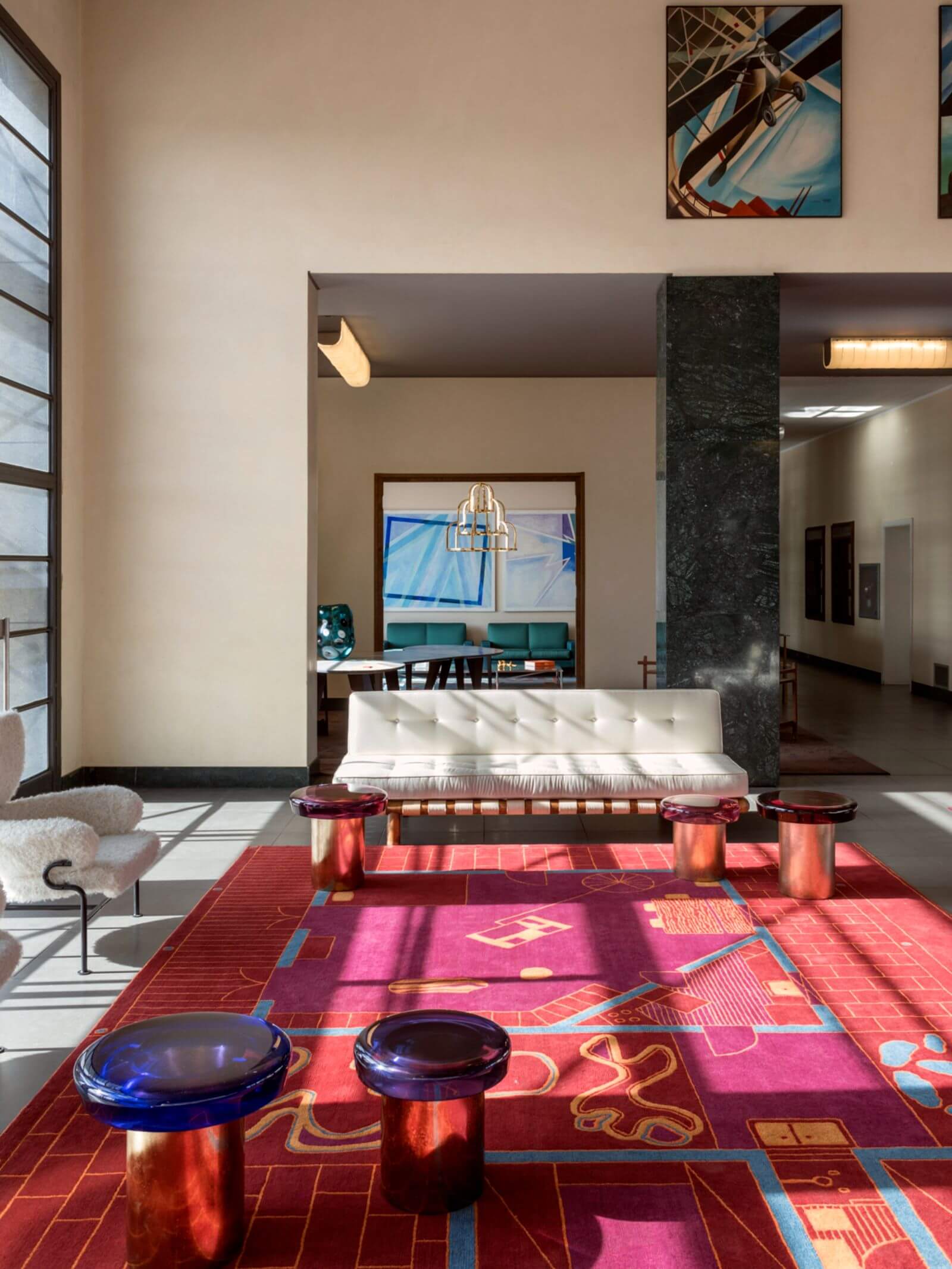
Nilufar at Nicelli Airport, Venice
COURTESY: Nilufar Gallery / PHOTOGRAPH: Giovanni Emilio Galanello
Curated by Cecilia Alemani, this year’s Biennale took The Milk of Dreams – the title of a children’s book by surrealist artist Leonora Carrington – as its theme. This allowed many artists to address the upheavals of our era, express new modes of existence and celebrate the power and resilience of imagination.
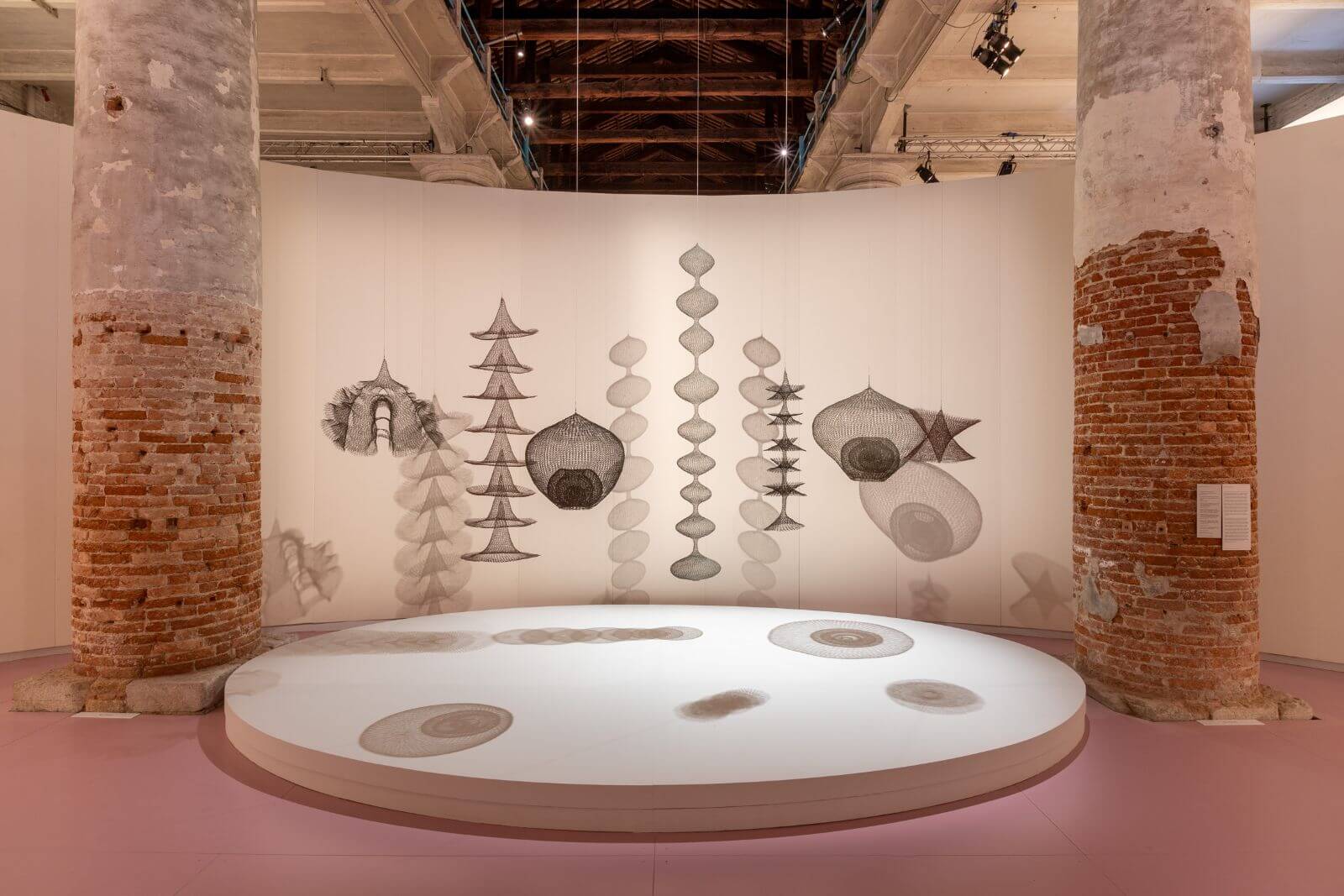
Ruth Asawa’s work as part of ‘Time Capsule IV’ at the Arsenale
COURTESY: Ruth Asawa
Amongst the presentations created within the Biennale, ‘Time Capsule IV’ at the Arsenale is particularly captivating for design enthusiasts. The exhibition ‘A leaf, a gourd, a shell, a net, a bag, a shoulder strap, a saddlebag, a bottle, a pot, a box, a container’ dwells on a theory elaborated by the anthropologist Elisabeth Fisher, which was further formalised in an essay by Ursula Le Guin. It suggests that human sources of creativity are not simply rooted in mythical and heroic tales, but also in practical inventions such as one of the most original design archetypes – the vessel.
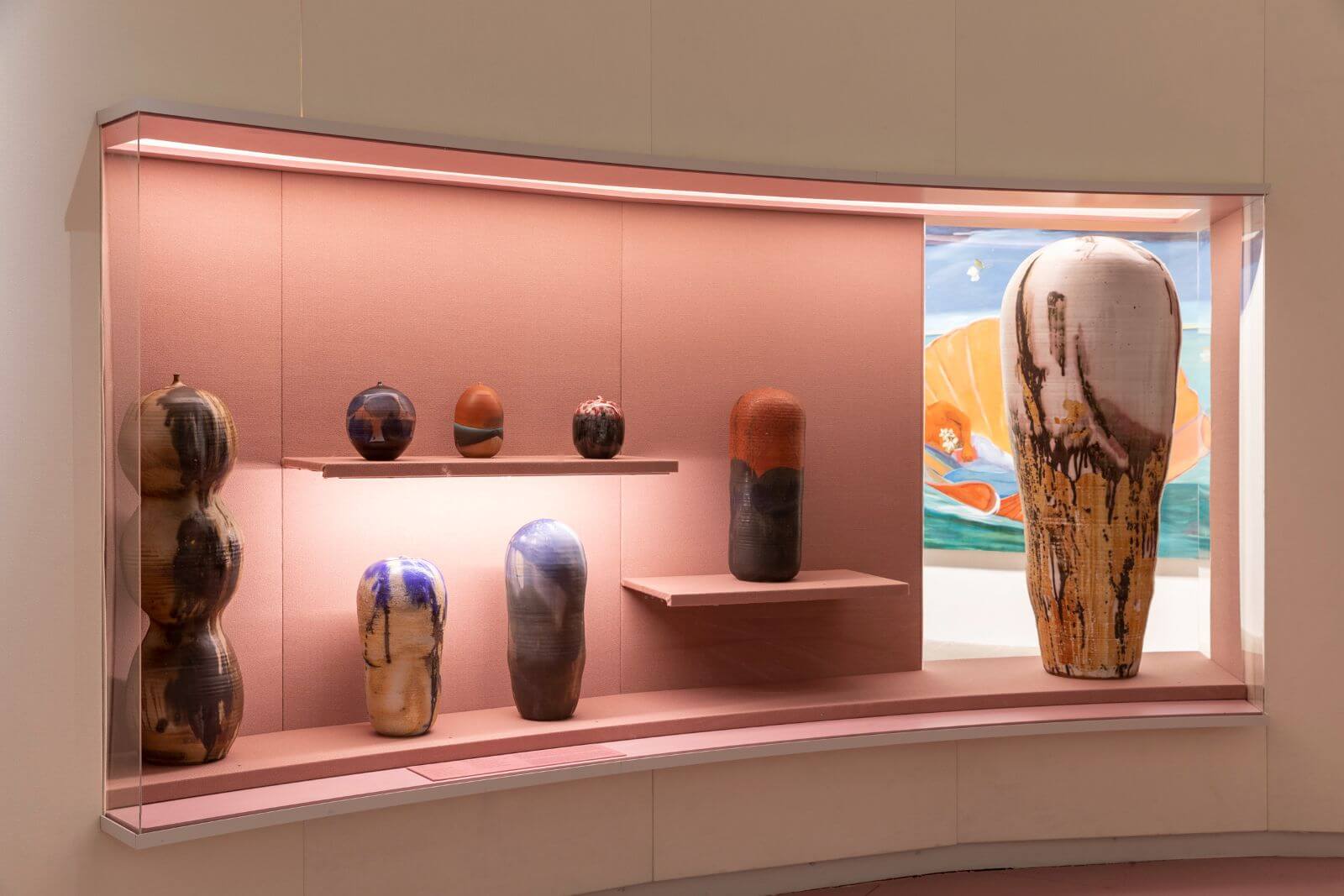
Toshiko Takaezu’s work as part of ‘Time Capsule IV’ at the Arsenale
COURTESY: Toshiko Takaezu
The display presents an iconology of vessels in various forms such as nets, bags, eggs, shells, bowls and boxes. Furthermore, it offers an interpretation of the vessel’s symbolic power beyond the metaphor of the female body as a container, or empty conveyor of other objects, instead revealing its capacity to be a generous and generative recipient, imbued with the power to nurture ideas, support intellectual developments and foster the imagination.
‘Time Capsule IV’ explores the subtle interconnections between the modernity of Sophie Taeuber-Arp’s glass beads pouch, the wire compositions of Ruth Asawa, the mysterious glazed porcelains of Toshiko Takaezu, and the ‘living organisms’ of Maria Bartuszová.
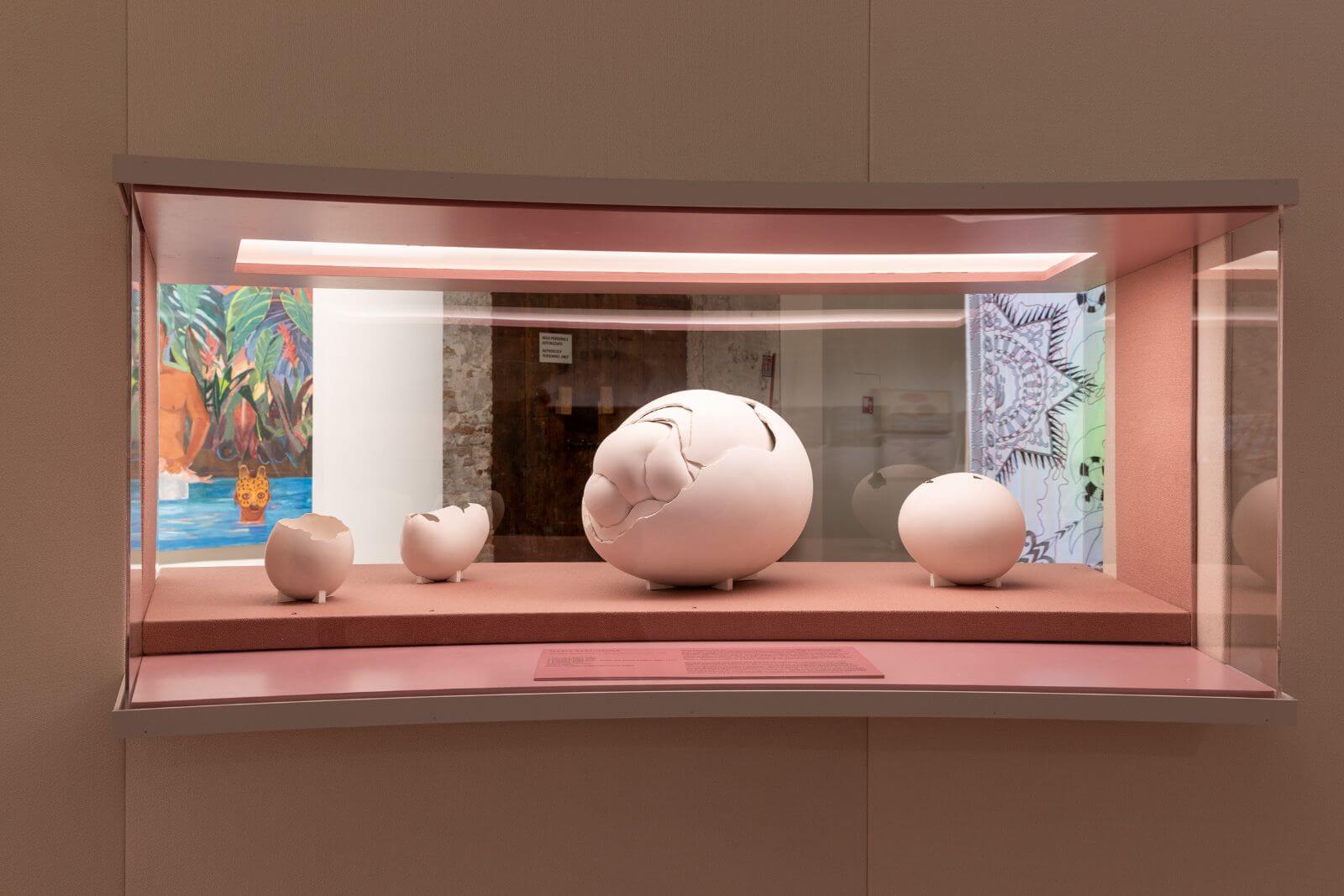
Maria Bartuszová’s work as part of ‘Time Capsule IV’ at the Arsenale
COURTESY: Maria Bartuszová
Homo Faber
The power of design to serve the imagination and humankind was the central theme of the ‘Homo Faber’ flagship event, held on the island of San Giorgio from the 10th April-1st May 2022. Organised by the Michelangelo Foundation, Homo Faber presented the work of hundreds of master artisans and designers, celebrating the skill, talent and creativity embodied in handmade objects.
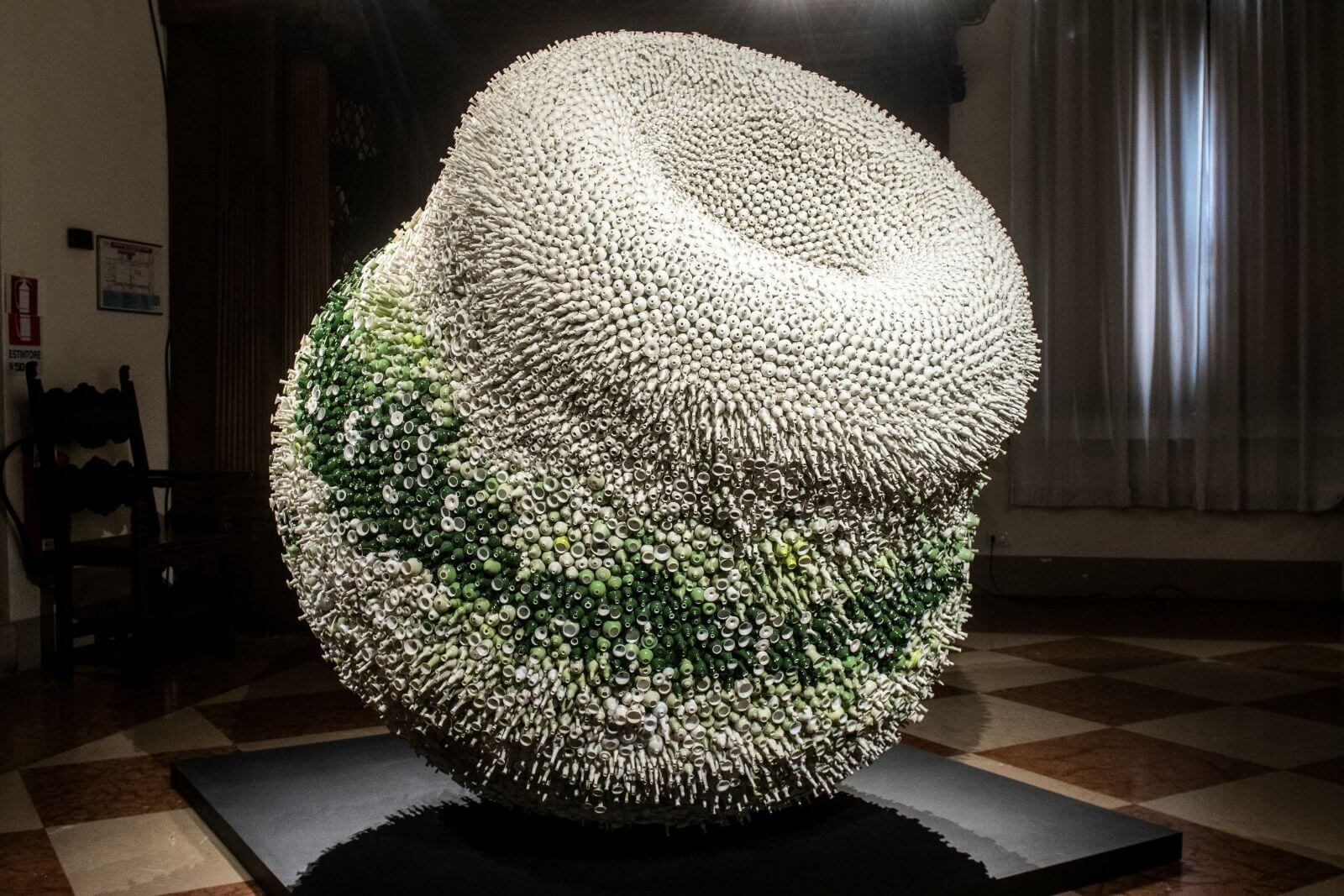
Grégoire Scalare, ‘The Ultimate Metamorphosis of Thetis’, 2021 – 2022
COURTESY: Homo Faber / PHOTOGRAPH: © Simone Padovani & Michelangelo Foundation
Set in the beautiful Fondazione Giorgio Cini, the visitor could wander through the labyrinth of gardens, the cloister and the many historic rooms of the Monastery of San Giorgio. Each pavilion within Homo Faber contained an impressive array of materials, manufactures and crafts – as well as some of the associated artisans, who gave demonstrations of their craft to the public.
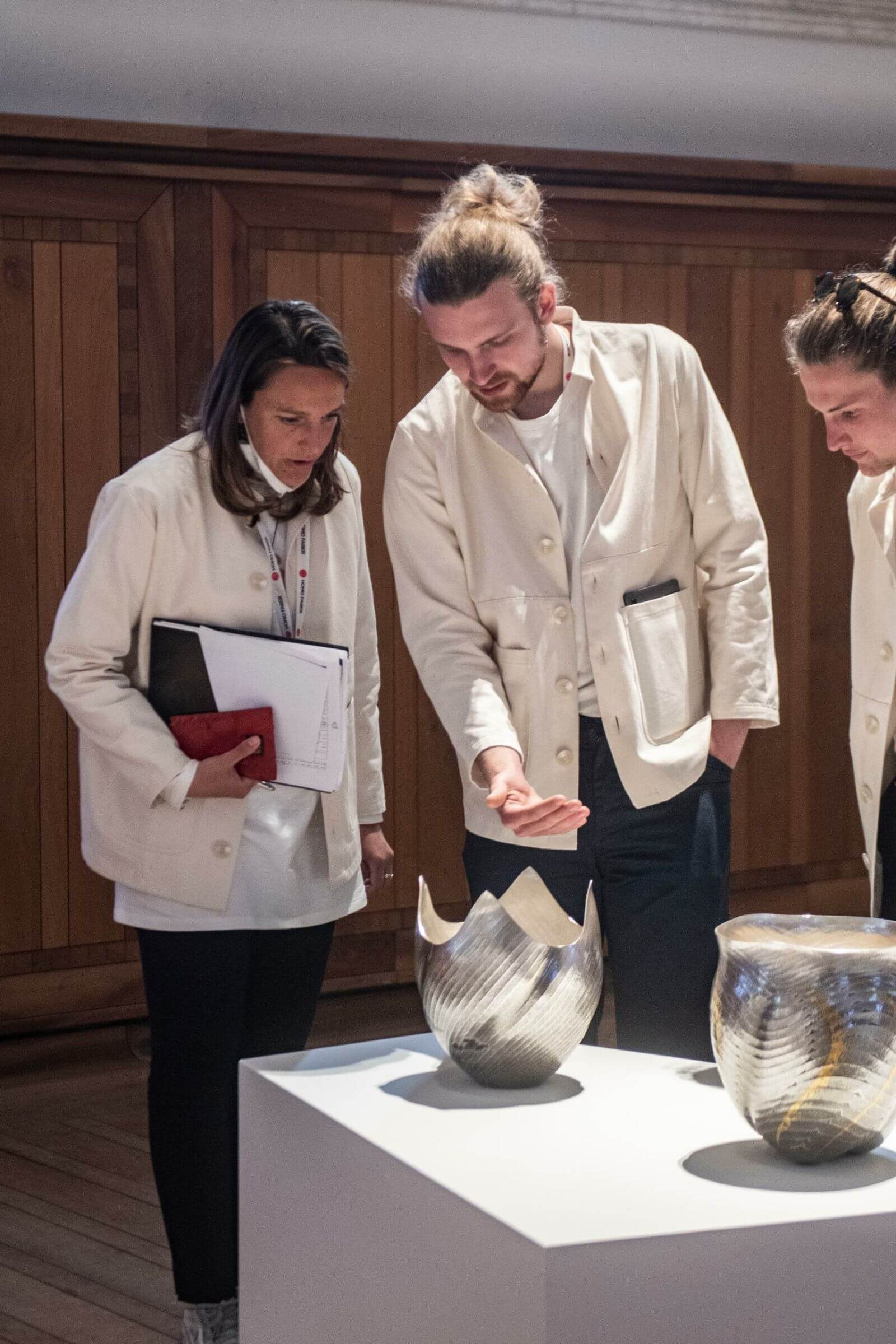
Pierre Giraud Young Ambassadors
COURTESY: Homo Faber / PHOTOGRAPH: © Simone Padovani & Michelangelo Foundation
As Japan was the guest of honour of this second edition, a pavilion was dedicated to the art of the Tea House. Another was focused on the intricate links between Italian and Japanese arts, whilst a third was curated by Robert Wilson and staged in a former 1960s swimming pool. In this last exhibition entitled ‘WAITING with peace and darkness’, the American director and visual artist offered a trail of his Japanese inspirations and creations – such as his theatrical creation from 1993 Puccini’s ‘Madame Butterfly’, and vases by Suzushi Hanayagi.
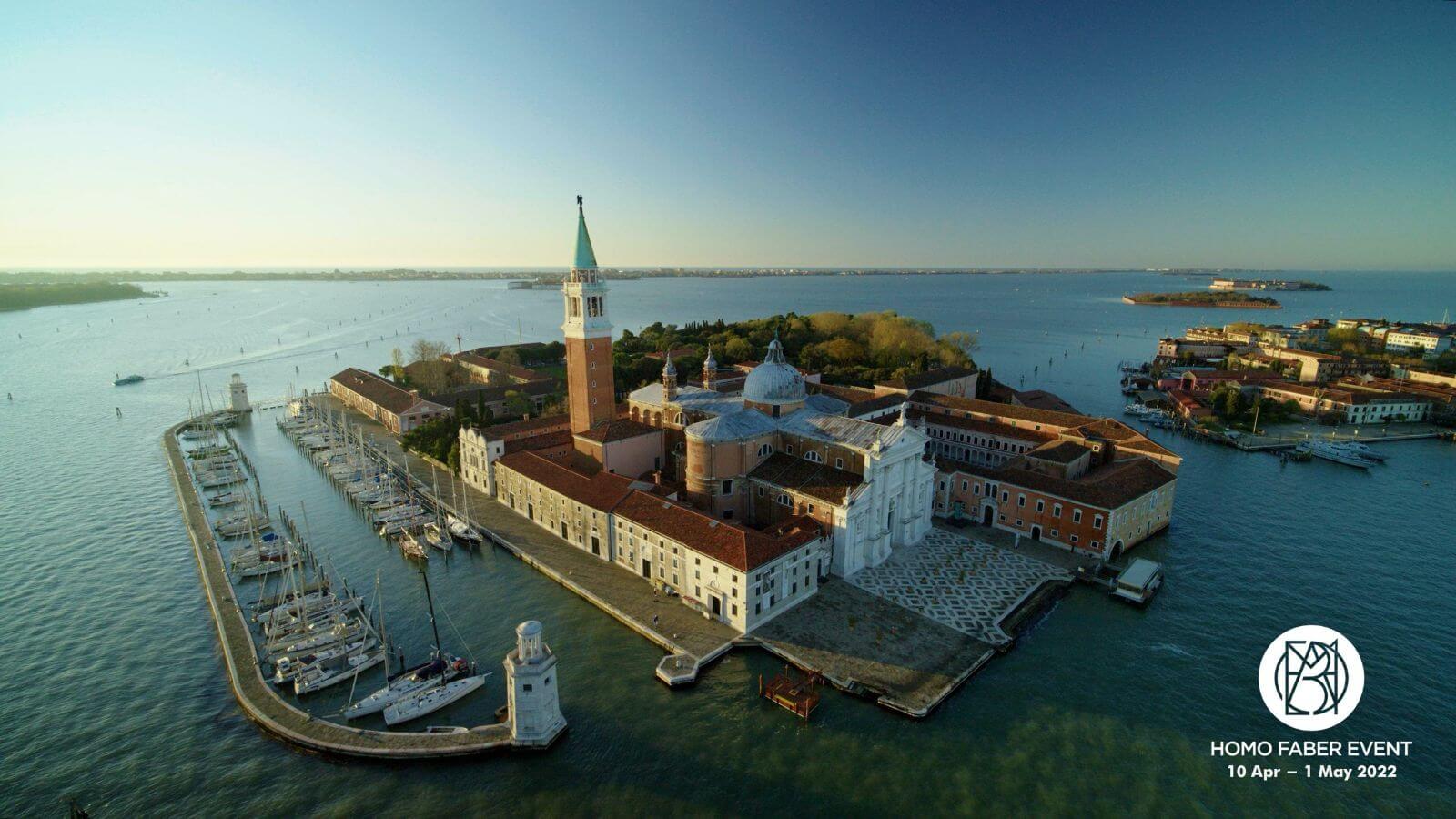
San Giorgio
COURTESY: Homo Faber / PHOTOGRAPH: © Giorgio Cini & Michelangelo Foundation
FontanaArte at Le Stanze del vetro
Not far from the Fondazione Giorgio Cini, the iconic Le Stanze del Vetro gallery presents ‘FontanaArte. House of Glass’. Curated by Christian Larsen, this retrospective of the legendary Milanese manufacturer of glass furnishing spans the production created under its four artistic directors: Gio Ponti (1932-1933), Pietro Chiesa (1933-1948), Max Ingrand (1954-1967) and Gae Aulenti (1979-1996).
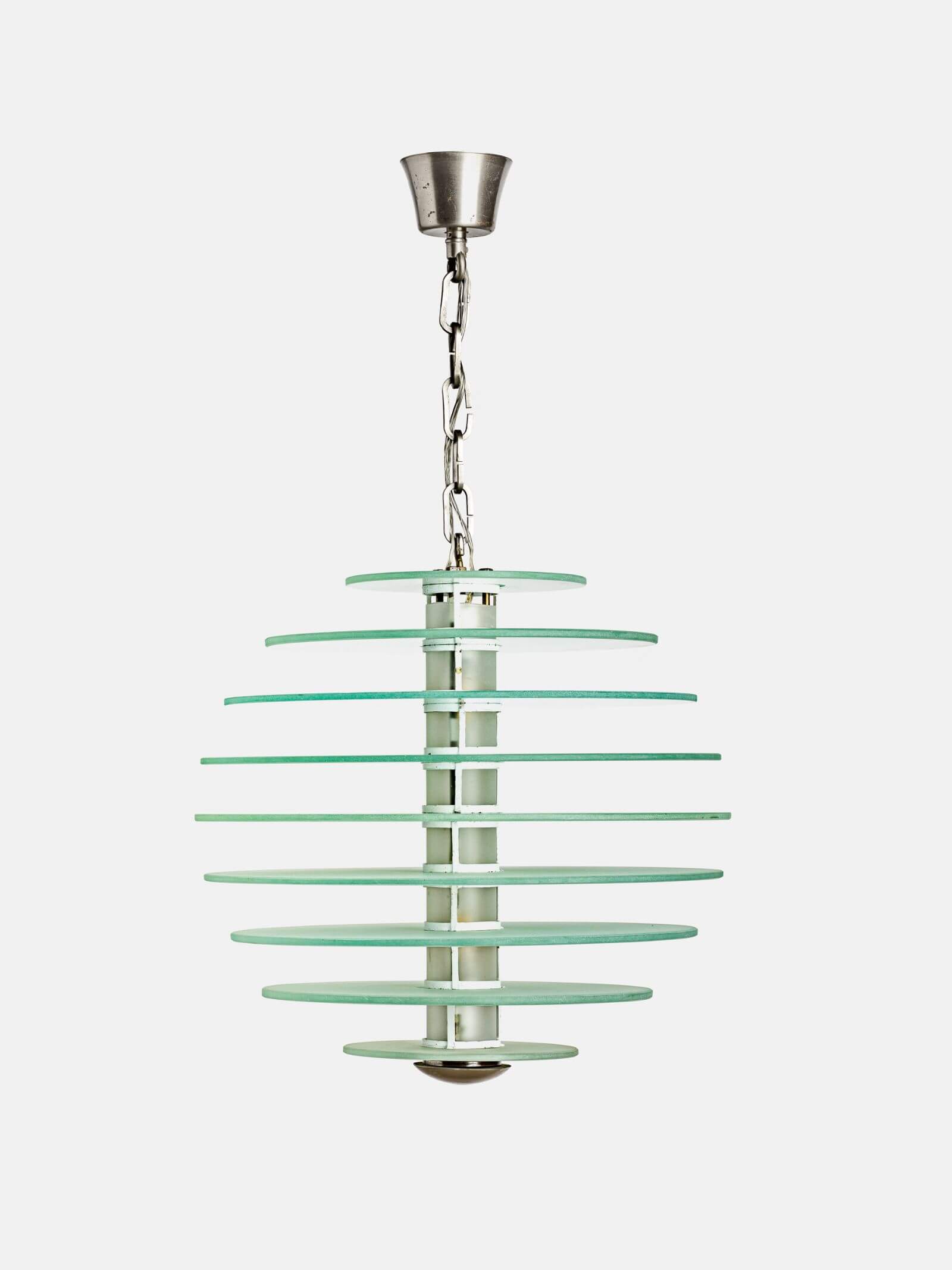
Gio Ponti, ‘0024 Chandelier’, 1933
COURTESY: Le Stanze del Vetro Fontana Arte
The visitor can admire the skilful display of sand and etching techniques, unique examples of Ponti’s and Chiesa’s creative genius (this early phase of production being almost exclusively one-offs), the innovative spirit of Ingrand’s lights, and – for the first time – the radical approach of Gae Aulenti.
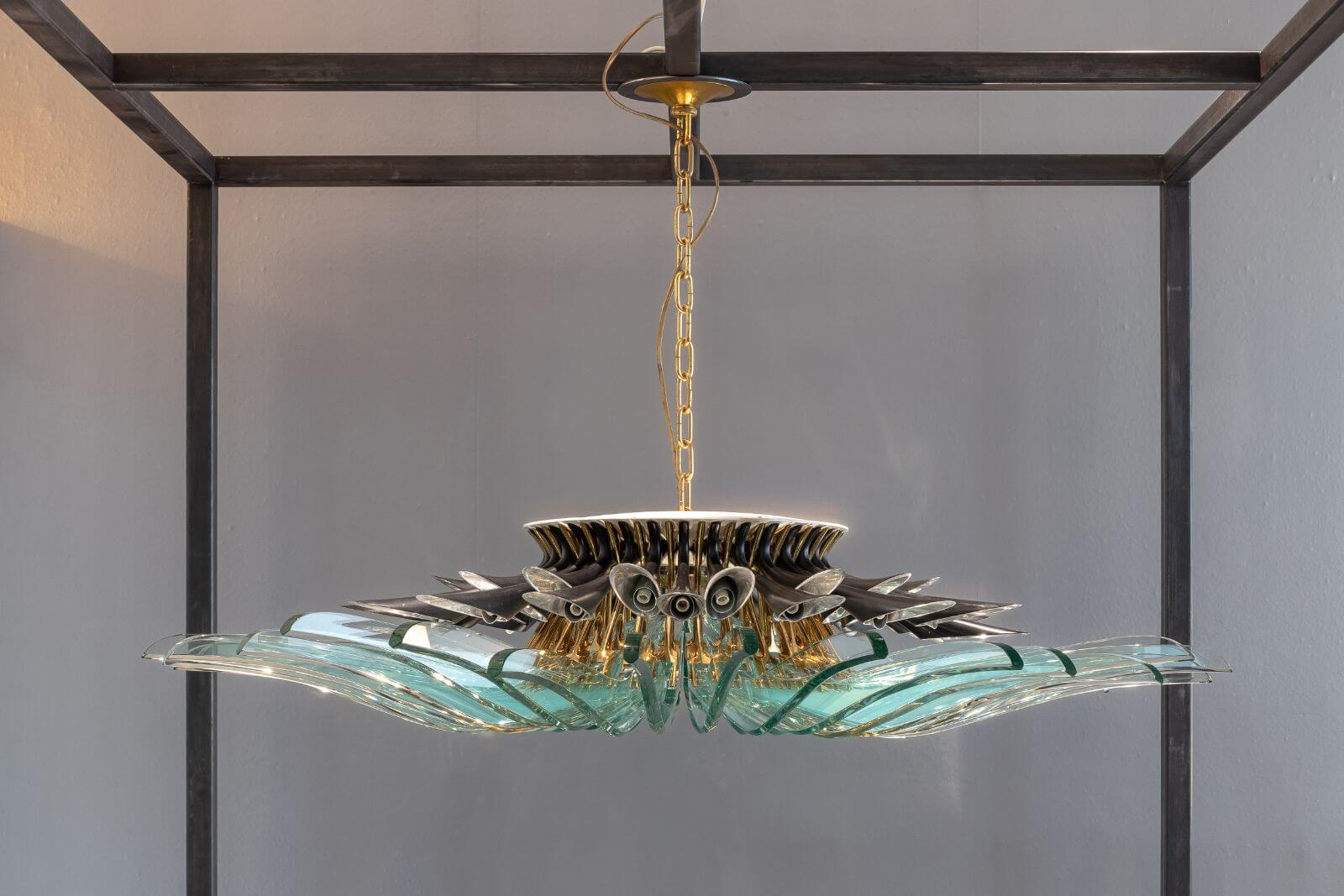
Max Ingrand, ‘Grand chandelier’, 1958
COURTESY: Donzella Gallery & Le Stanze del Vetro Fontana Arte / PHOTOGRAPH: Enrico Fiorese
The choice of an American curator for this particular exhibition, as well as the choice of objects (which mostly come from a non-Italian collection) might surprise the FontanaArte purist. However, the clever and elegant museography upholds the high standards of the gallery.

Installation view, FontanaArte House of Glass
COURTESY: Le Stanze del Vetro Fontana Arte / PHOTOGRAPH: Enrico Fiorese
The exhibition also provides an insightful commentary on glass as a medium to design a modern world. The ‘House of Glass’ may refer to legends – such as the one built by King Solomon to see the supernatural nature of the Queen of Sheba – but the ideal form of living has been embodied in the glass house throughout the 20th century. Glass is a way to let the light in, a metaphor for societal transformation, for the pioneers at the Bauhaus, as well a way to connect humans in their habitations with their surrounding nature, for instance with Le Corbusier’s buildings.
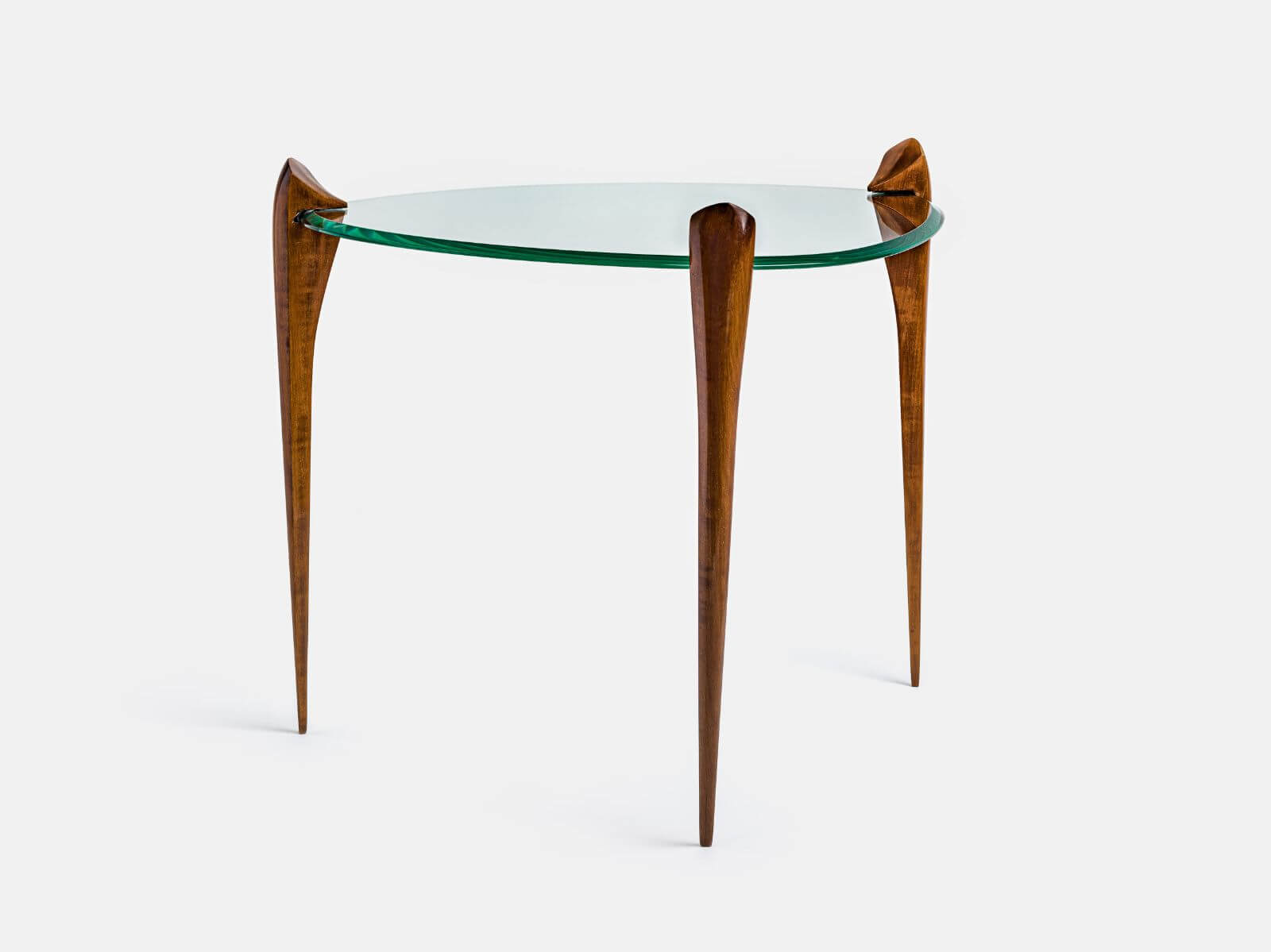
Max Ingrand, ‘Side Table’, 1955
COURTESY: Le Stanze del Vetro Fontana Arte / PHOTOGRAPH: Enrico Fiorese
Since their creation in 2012, Le Stanze del Vetro has delighted and educated the public with two exhibitions focusing on 20th and 21st century Murano glass, as well as modern and contemporary glass from further afield. One can only be grateful for this free access to these fascinating gems of decorative art history presented to such high standards.
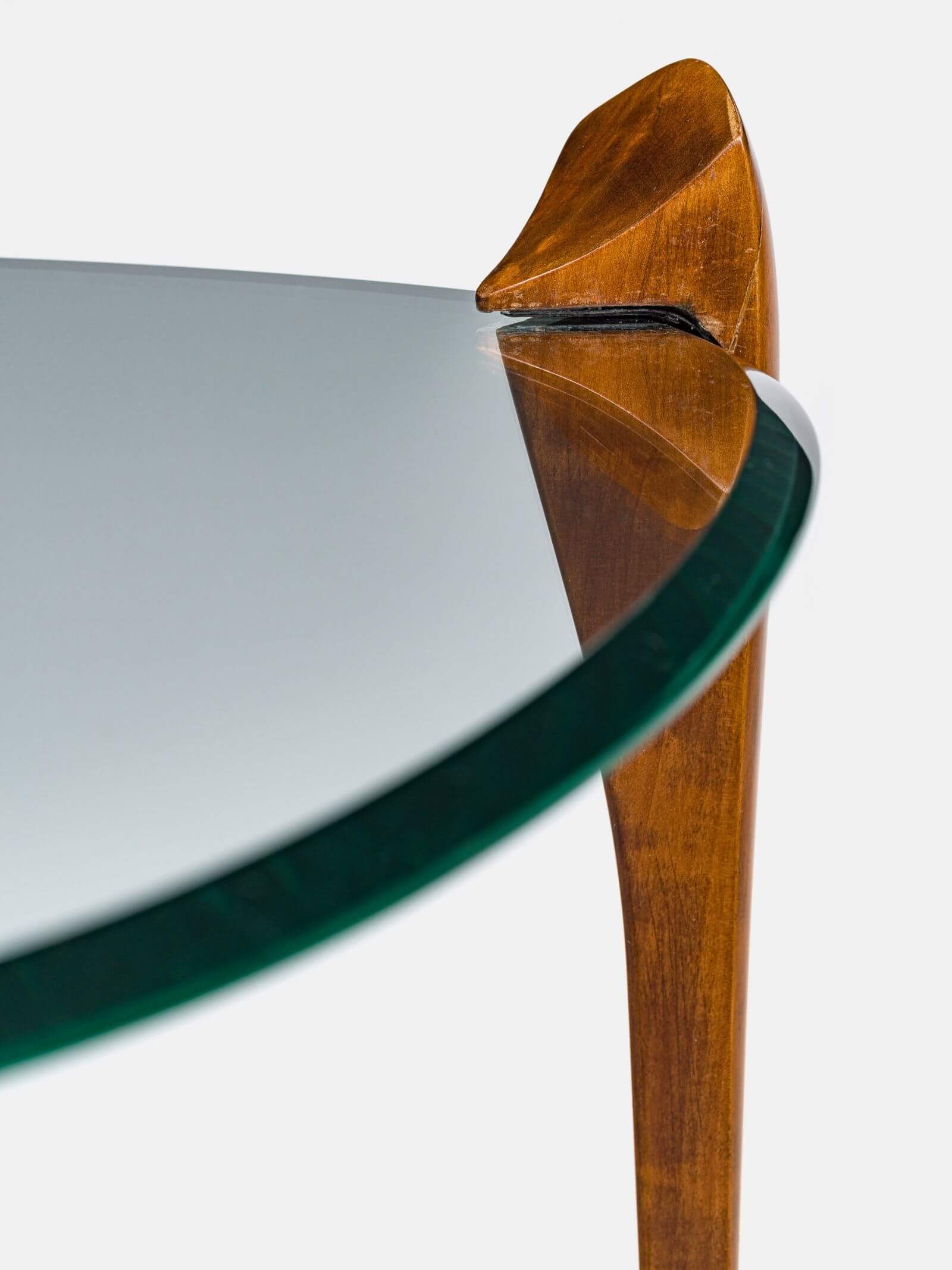
Max Ingrand, ‘Side Table’, 1955 (detail)
COURTESY: Le Stanze del Vetro Fontana Arte / PHOTOGRAPH: Enrico Fiorese
Fondazionne Querinni Stampalia
Coinciding with the opening of the Biennale, London and Hong Kong-based White Cube gallery opened an exhibition in the Palazzo Querini Stampalia, which was curated by the artist Danh Vo and curator Chiara Bertol.
The exhibition displays works by Park Seo-Bo (b. 1931), credited as being the father of the ‘Dansaekhwa’ movement, and acclaimed sculptor Isamu Noguchi (1904–1988). It is sometimes a challenge for contemporary artists to display their works amongst such historic architectural settings – in this case in a 16th century aristocratic palace that was renovated by architect Carlo Scarpa in the 1960s – but the dialogue is a delight.
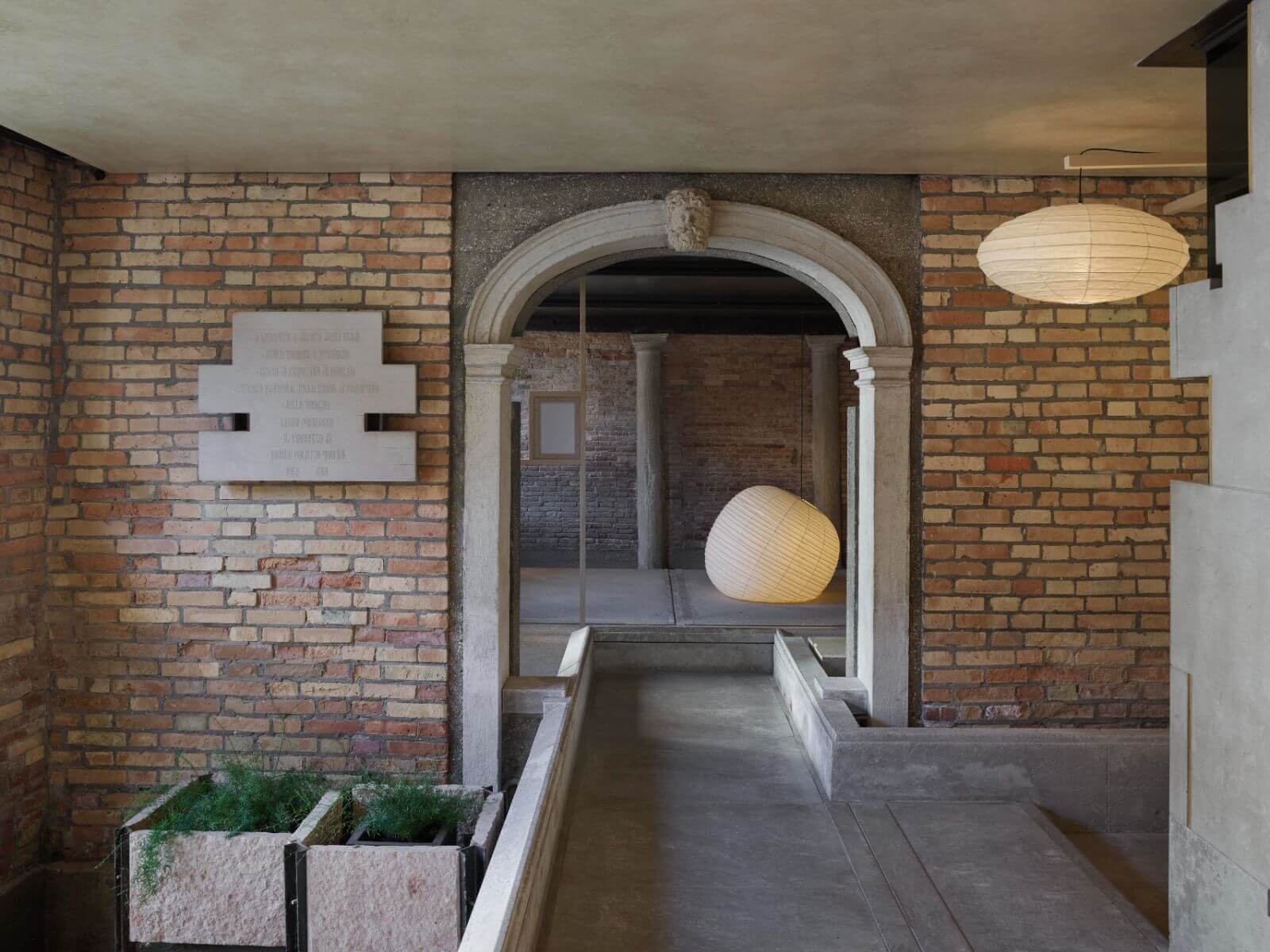
Installation view, Palazzo Querini Stampalia
COURTESY: © White Cube / PHOTOGRAPH: Ollie Hammick
Giorgio Mastinu
Giorgio Mastinu’s gallery, which is located between Campo Santo Stefano and Palazzo Grassi, is divided between two spaces. The first is dedicated to an exhibition of rare vases by Enzo Mari from the 1994 performance ‘Per forza di levare’. The happening was defined as a ‘one-second sculpture demonstration’ by the designer and produced vases whose final shape was obtained by hitting the porcelain cylinder with a mallet. A perfect illustration of the ever questioning and cheeky approach of Enzo Mari’s design practice.
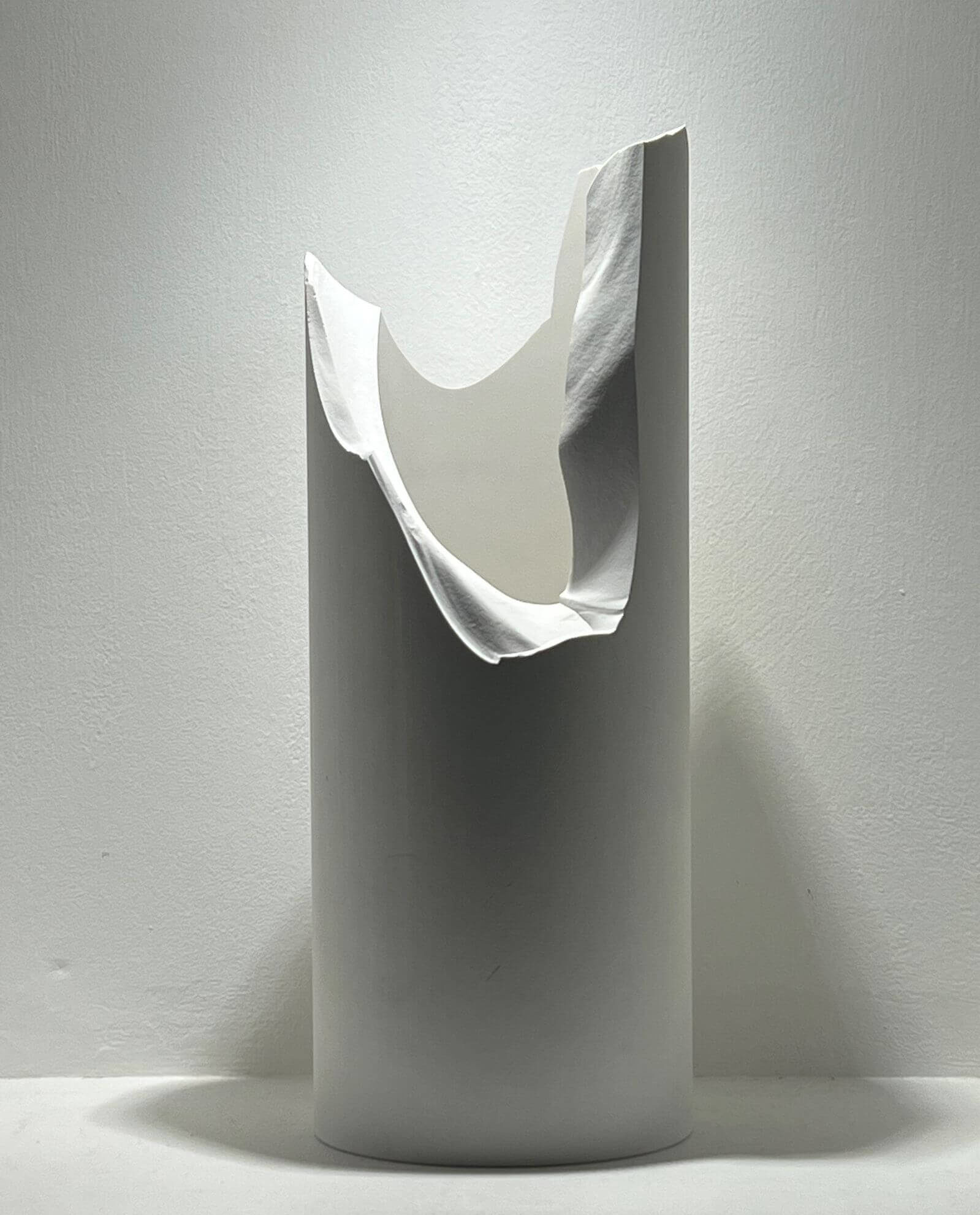
Enzo Mari, ‘vaso rotto / per forza di levare (broken vase / by taking away)’, 1994
COURTESY: Giorgio Mastinu
For the opening of the Biennale, Mastinu’s second space is showing the latest works by Erwan and Ronan Bourroullec in collaboration with the Milanese ceramic factory Mutina. The exhibition features three new series of ceramic ‘Rombini’ vases in exclusive colours. Resting on the elegant white bricks created by the designers, the vases are complemented by drawings, ceramic creations – and of course illuminated by the lights of Enzo Mari.
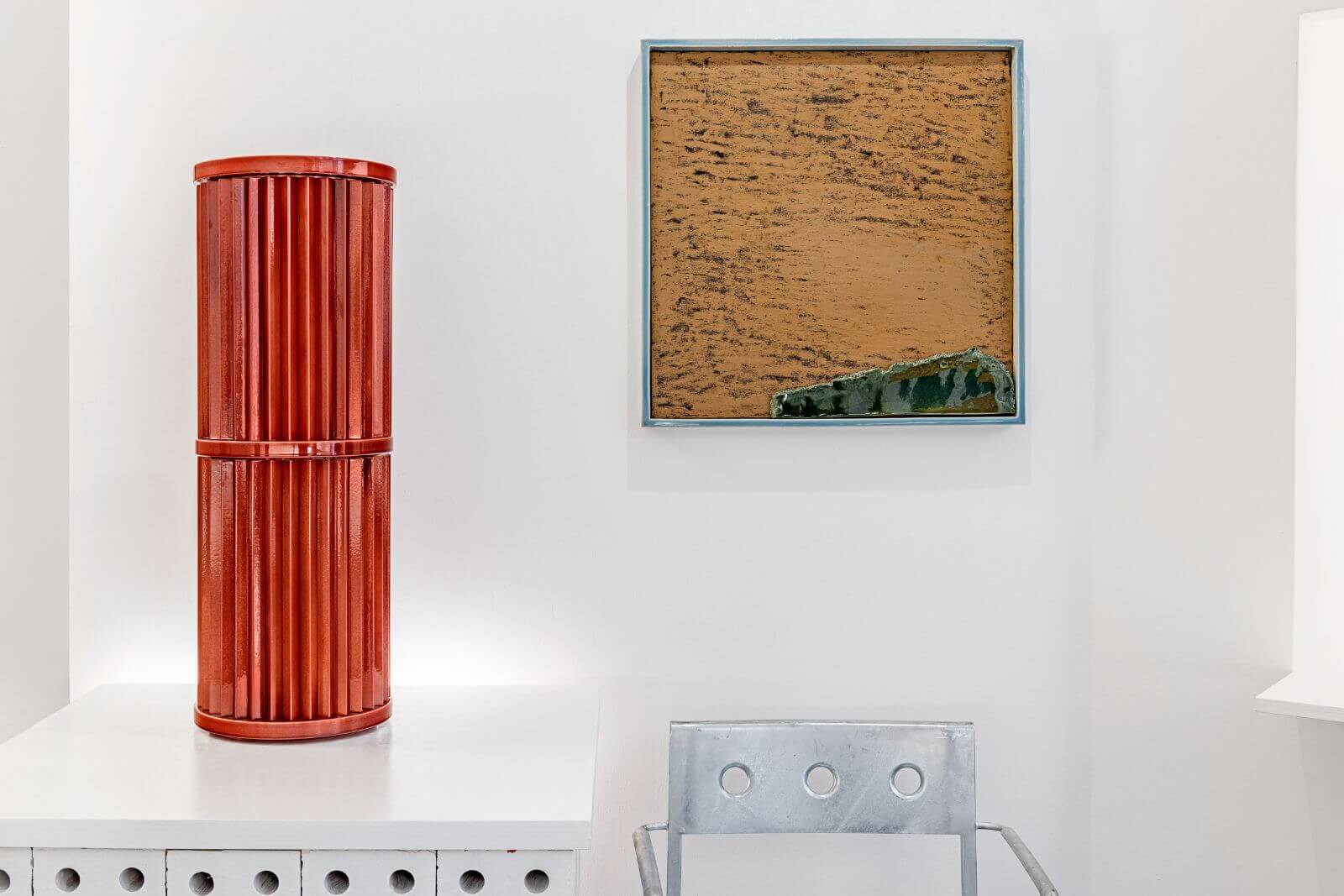
Installation view, Giorgio Mastinu Fine Art Gallery
COURTESY: Giorgio Mastinu / PHOTOGRAPH: Enrico Fiorese
Visitors walking between the exhibitions should take time to enjoy the delightful window curated by the American architecture and design firm Charlap Hyman & Herrero for the creative space FREE Venezia, championed by Yali Glass.
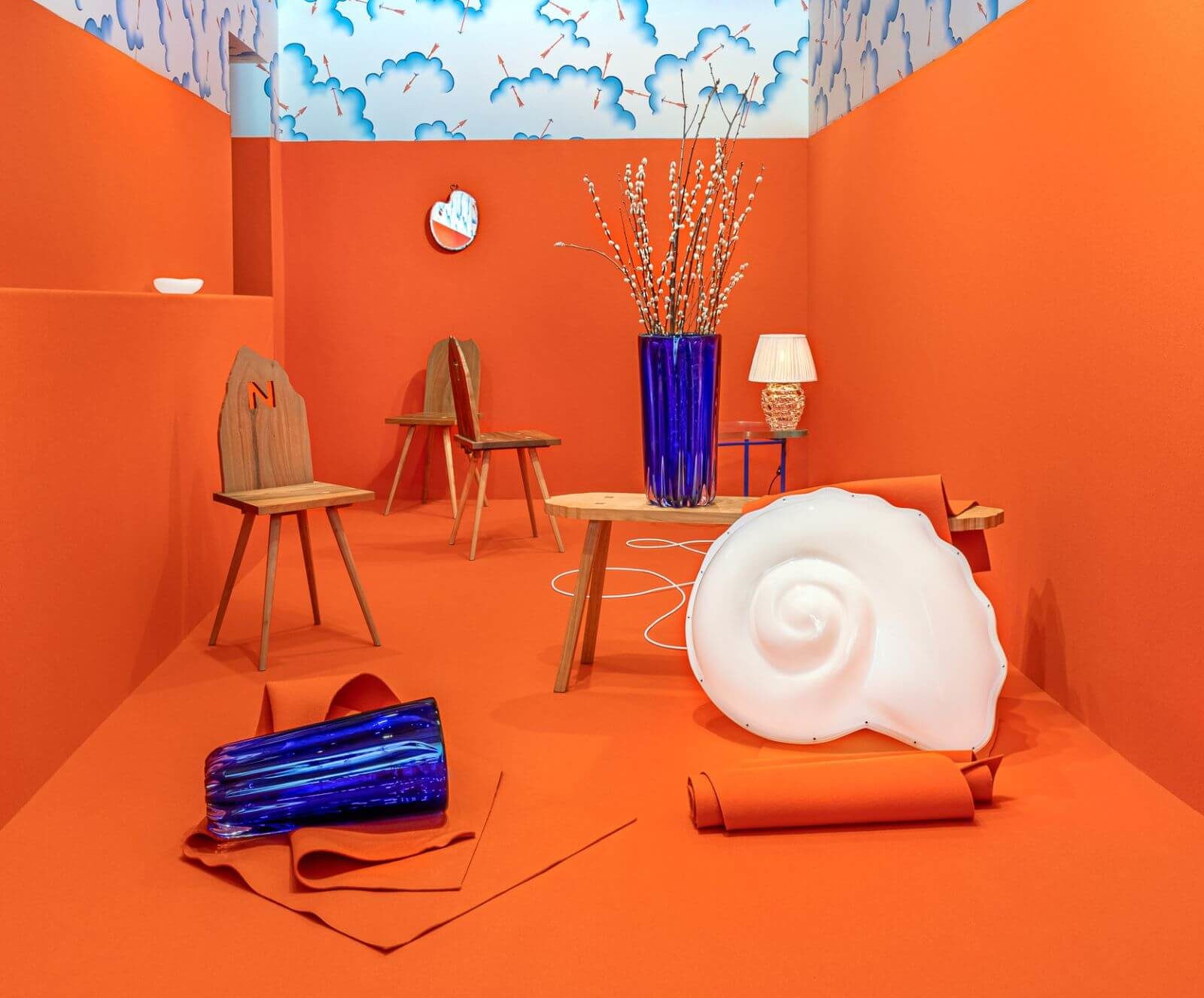
YALI and Charlap Hyman & Herrero (CHH), inaugural installation at the FREE exhibition space
COURTESY: YALI + Charlap Hyman & Herrero (CHH)
When the time comes to leave La Serenissima, should you be lucky enough to exit through the Giovanni Nicelli private airport then you will enjoy collectible design up to your very last Venetian steps. The airport, located in a historic 1920s building, is hosting a collaboration with Nilufar gallery of historical and contemporary design pieces. There is also another exhibition in Spazio Esso – the airport’s former fuel’s distributor – dedicated to the European debut of the ceramic artist Sin Ying Cassandra Ho.
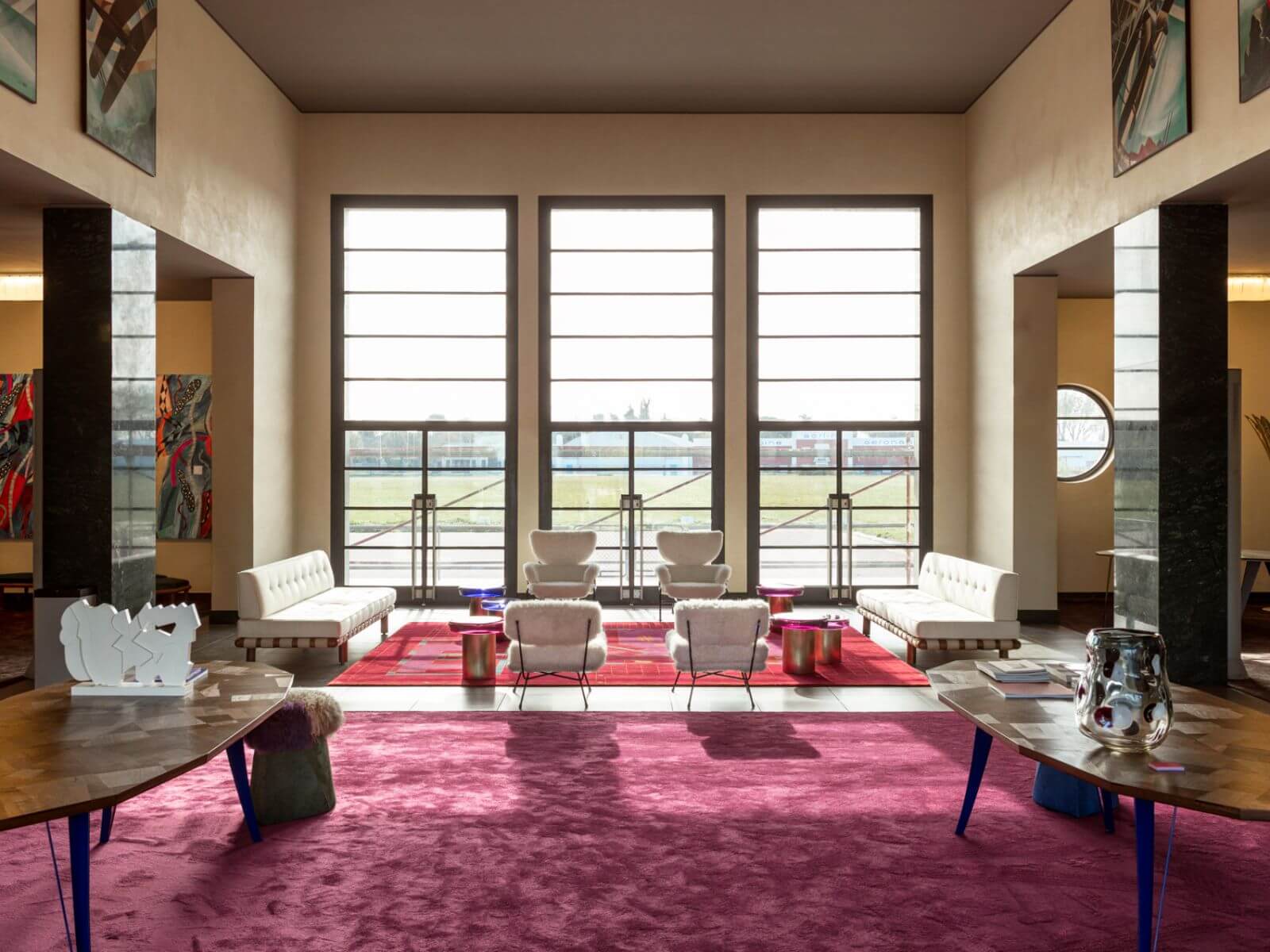
Nilufar at Nicelli Airport, Venice
COURTESY: Nilufar Gallery / PHOTOGRAPH: Giovanni Emilio Galanello
In 1948, the surrealist artist Kurt Seligmann wrote: “Magic was a stimulus to thinking, it freed man from fears, endowed him with a feeling of his power to control the world, sharpened his capacity to imagine and kept awake his dreams of higher achievement” – alluding to WWII. Today, as we are reminded that democracy and peace still need to be fought for, the words and imaginative universe of surrealism is strangely resonant. Away from the VIP invitations, the art market trends or the Instagram posts, perhaps the gathering of art and beauty still has the power to give us hope and stamina.
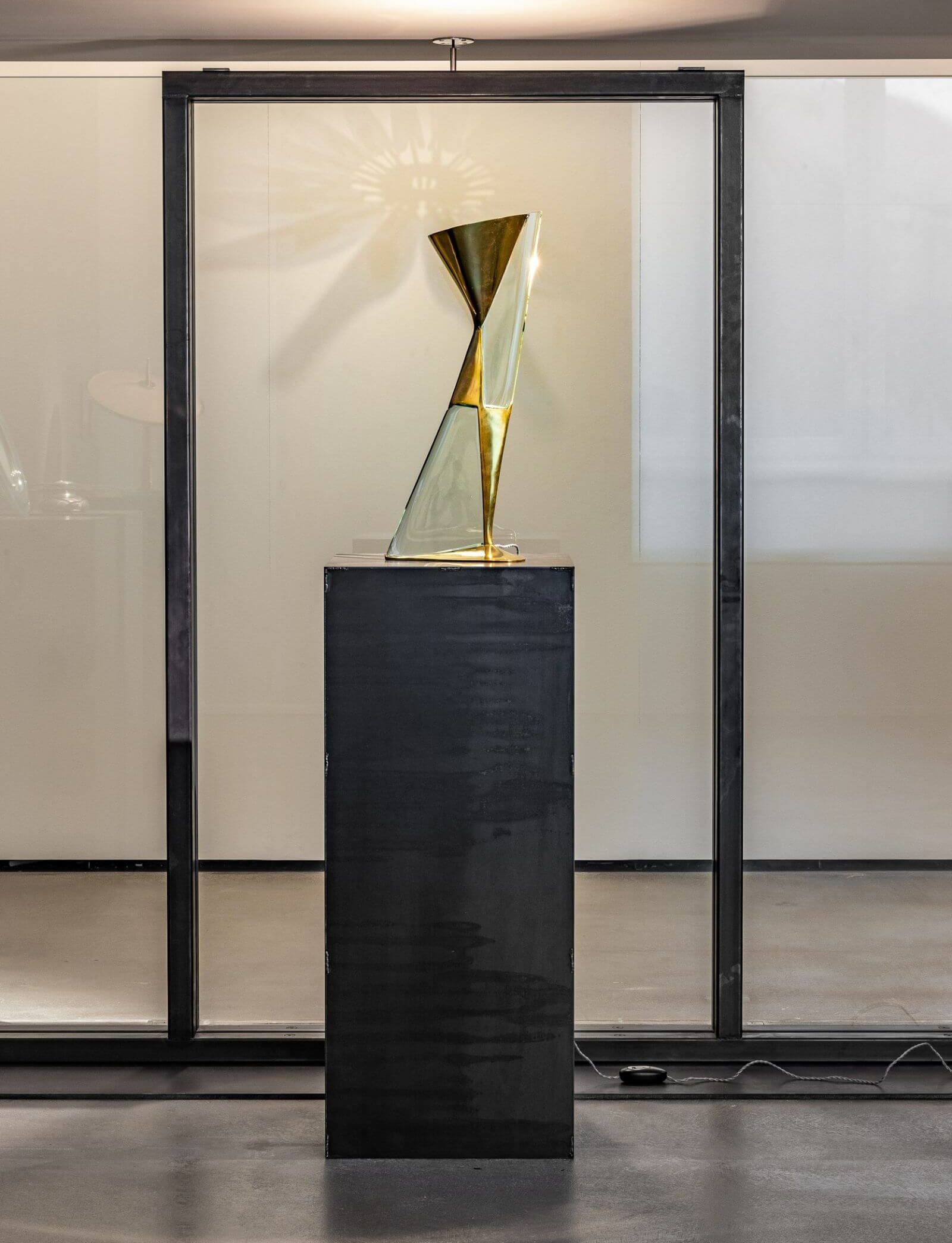
Max Ingrand, ‘Table lamp model 1815’, 1957
COURTESY: Le Stanze del Vetro Fontana Arte / PHOTOGRAPH: Enrico Fiorese
